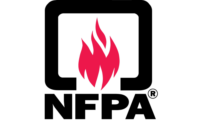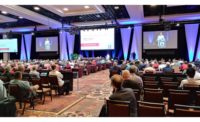On June 25, 2015, a vote about proposed language in the 2016 edition of NFPA 72 took place at the NFPA meeting in Chicago. A motion passed by a 142-to- 80 margin to modify a proposed sentence.
Proposed language in the 2016 edition of NFPA 72 was beneficial to the security industry and security customers, according to Ed Bonifas of Alarm Detection Systems, Aurora, Ill. This language clarified the position that listed central stations are able to provide remote station service if that is the level of service desired. Specifically, within the proposed final edition was a sentence that read: “26.5.3.1.3 Alarm, supervisory and trouble signals shall be permitted to be received at a listed central supervising station. Despite this improvement to NFPA 72, opposition has arisen. The opposition presented two motions (certified amending motions) to rescind the proposed language, which would leave listed central stations’ ability to provide remote station service uncertain. The two motions were:
- Motion Sequence # 72-8 seeks to limit central station monitoring to situations approved by the AHJ.
- Motion Sequence # 72-9 seeks to eliminate the proposed paragraph altogether.
Motion sequence # 72-8 passed, changing the proposed sentence to the following: “When permitted by the authority having jurisdiction, alarm, supervisory and trouble signals shall be permitted to be received at a listed central supervisor station.”
Motion sequence # 72-9 was, therefore, withdrawn.
Bonifas said, “While I’m happy the central station language will be staying in the code, I am disappointed that it still has oversight by local authorities who in some cases may have a conflict of interest.”
Bonifas believes the code should reflect that a facility meeting the stringent central station listing requirements automatically meets the remote station facility standards. Building in this provision prevents a central station from arbitrarily being denied recognition as a remote station, something that is currently occurring within the greater Chicago area, driven by fire departments that operate their own alarm monitoring centers. In these situations, the AHJ designates a single remote station, typically operated by the AHJ itself, as “approved” under the code and then rejects all forms of private fire alarm monitoring, including monitoring via a NRTL listed central station. This practice eliminates all private competition and leaves a government entity, who is also the AHJ, as the sole provider of fire monitoring services.
Visit www.nfpa.org for information.




